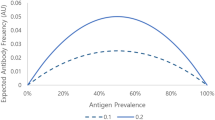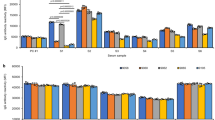Abstract
TECHNICAL difficulties have for a long time prevented any improvement in our knowledge of human leucocyte groups. The results of the Third Workshop on Histocompatibility Testing, held at Torino in 1967, showed that these difficulties are being overcome1. It now seems evident that the most important leucocyte antigens—transplantation antigens also present on platelets and most other tissues—belong to one very complex system (HL–A) controlled by the genes on at least two closely linked mutational sites on a pair of autosomal chromosomes2. This makes associations of antigenic factors possible, so that it is common to see the “inclusion” of some antigens in other “broader” antigens; that is, the antigen included is rarely or never present in individuals lacking the broad antigen3. This phenomenon has parallels in red cell serology; for example, the A1 antigen is included in the A antigen, and in the rhesus system, which has some similarities to the HL–A system, the C and D antigens are both included in the G antigen4. Within the HL–A system, however, such inclusions can often be explained by multispecificity of the serum used to define the broad antigen, and so absorption experiments are essential for the elucidation of this system. Absorption experiments have shown that the leucocytes from some individuals, although not agglutinated by a particular serum, nevertheless can completely absorb all agglutinating activity. Such cells are said to be agglutination-negative–absorption-positive (ANAP)5 and are considered to be positive for the antigen in question. A similar cytotoxic-negative–absorption-positive (CYNAP) phenomenon has been observed in some lymphocytotoxic antibodies, but some of these cases can be explained by the presence of anti-complementary factors in the serum6. We present here evidence that the “reaction-negative–absorption-positive” (RNAP) phenomenon and the inclusions can in some cases be explained by cross-reactive antibodies.
This is a preview of subscription content, access via your institution
Access options
Subscribe to this journal
Receive 51 print issues and online access
$199.00 per year
only $3.90 per issue
Buy this article
- Purchase on Springer Link
- Instant access to full article PDF
Prices may be subject to local taxes which are calculated during checkout
Similar content being viewed by others
References
Curtoni, E. S., Mattiuz, P. L., and Tosi, R. M., in Histocompatibility Testing, 433 (Munksgaard, Copenhagen, 1967).
Ceppelini, R., Curtoni, E. S., Mattiuz, P. L., Miggiano, V., Schudeller, G., and Serra, A., in Histocompatibility Testing, 149 (Munksgaard, Copenhagen, 1967).
Dausset, J., Ivanyi, P., and Ivanyi, D., in Histocompatibility Testing, 51 (Munksgaard, Copenhagen, 1965).
Mollison, P. L., in Blood Transfusion in Clinical Medicine, fourth ed., 294 (Blackwell, Oxford, 1967).
Rood, J. J. van, thesis, Leiden (1962).
Ferrone, S., Tosi, R. M., and Centis, D., in Histocompatibility Testing, 357 (Munksgaard, Copenhagen, 1967).
Kissmeyer-Nielsen, F., and Kjerbye, K. E., in Histocompatibility Testing, 381 (Munksgaard, Copenhagen, 1967).
Svejgaard, A., and Kissmeyer-Kielsen, F., Vox Sang., 14, 106 (1968).
Kissmeyer-Melsen, F., and Kjerbye, K. E., Bull. Europ. Soc. Human Genet., 1, 58 (1967).
Batchelor, J. R., and Chapman, B. A., Ann. NY Acad. Sci., 129, 529 (1966).
Walford, R. L., and Troup, G. M., Vox Sang., 12, 173 (1967).
Kabat, E. A., in Blood Group Substances, Their Chemistry and Immuno chemistry, 265 (Academic Press, New York, 1956).
Walford, R. L., Shanbrom, E., Troup, G. M., Zeller, E., and Ackerman, B., in Histocompatibility Testing, 221 (Munksgaard, Copenhagen, 1967).
Dausset, J., Colombani, J., Colombani, M., Legrand, L., and Feingold, N., Nouv. Revue d'Hémat. (in the press).
Author information
Authors and Affiliations
Rights and permissions
About this article
Cite this article
SVEJGAARD, A., KISSMEYER-NIELSEN, F. Cross-reactive Human HL-A Isoantibodies. Nature 219, 868–869 (1968). https://doi.org/10.1038/219868a0
Received:
Published:
Issue Date:
DOI: https://doi.org/10.1038/219868a0
This article is cited by
-
Immunoadsorption in the sensitized transplant recipient
Kidney International (1990)
-
Contribution of monoclonal antibodies to the study of HLA class I antigens
La Ricerca in Clinica e in Laboratorio (1984)
-
Role of theHLA complex in the antibody response to malaria under natural conditions
Immunogenetics (1979)
-
An antibody cross-reacting with LA and FOUR antigens of theHL-A system
Immunogenetics (1974)
Comments
By submitting a comment you agree to abide by our Terms and Community Guidelines. If you find something abusive or that does not comply with our terms or guidelines please flag it as inappropriate.



